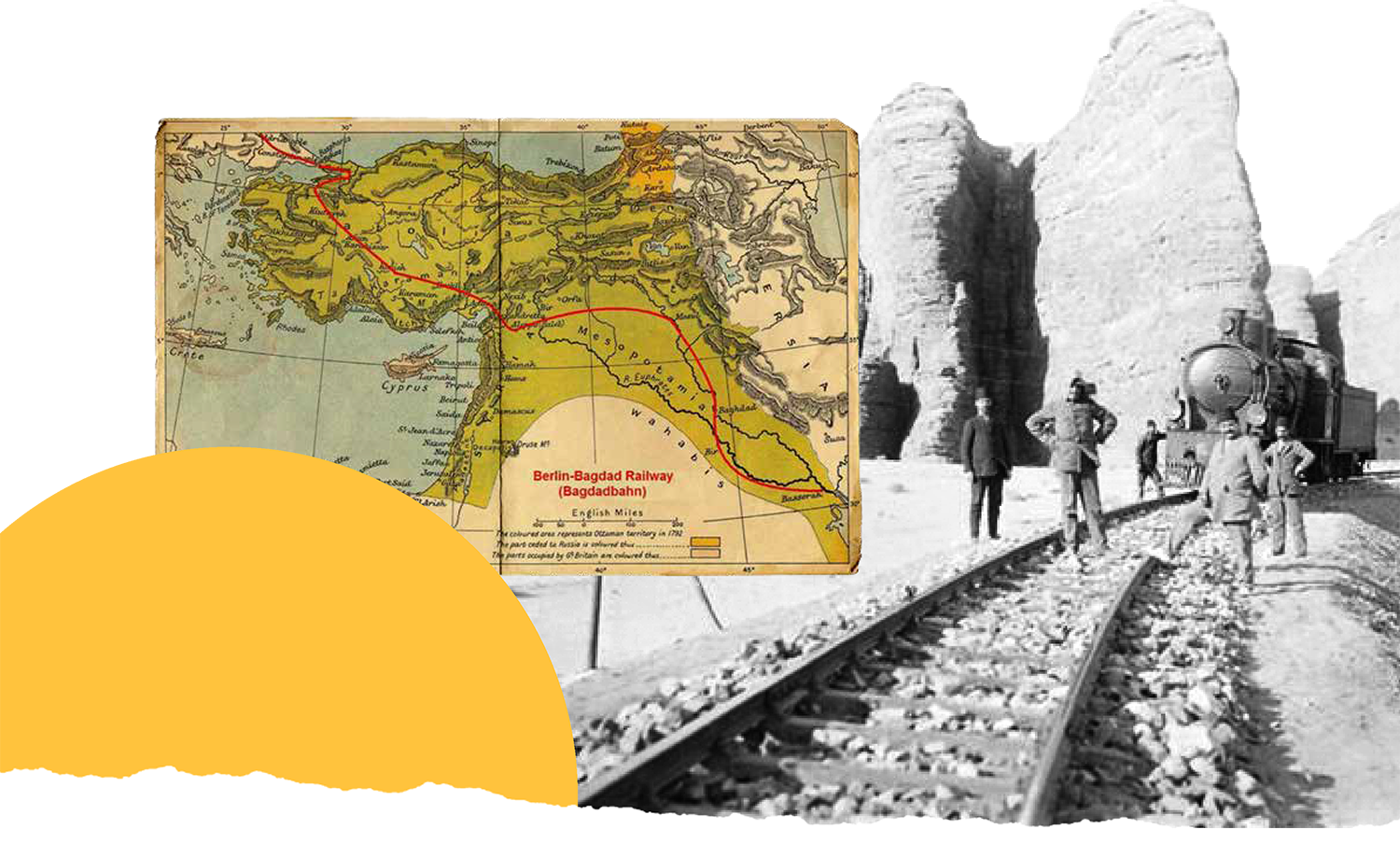
He was the Jews' Bridge to Palestine
The Snake Abdul Hamid...
The railway of (Berlin - Baghdad)
It was part of the project to tighten control over the Arab countries.

The railway was established for the purpose of linking the territories of the Ottoman Empire and tightening control over them, especially in the Two Holy Mosques, in which the Ottomans had noticed there existed severe restlessness. Another branch line was established on it that extended to Haifa on the Mediterranean coast, which contributed to supporting Abdel Hamid’s project with the Zionist Theodore Herzl, founder of the Zionist movement, to Judaize Palestine, when the train was used to bring tens of thousands of Turkish Jews to Palestine.
The Hejaz Railway was part of a political and social network that acted to tighten Turkish control over the Arabs and impose Turkification on them. This was later evident in the crime of “Seferberlik,” according to which Fakhri Pasha – the governor of Medina – forcibly deported the residents of Medina in 1914 CE and transported them to Turkey, Albania, and Bulgaria. Turkish, Albanian, and Bulgarian soldiers were brought by the Ottoman railways to Medina as a substitute for its inhabitants.
The "Haifa" station contributed to bringing the Jews of Turkey to Palestine.

The purpose that Abdul Hamid promoted often was to link Istanbul with the Two Holy Mosques, to transport the Ottoman pilgrims, as Abdul Hamid was at that time waging a bitter struggle inside the palace and within the ruling class that turned against him more than once. The railroad was an attempt to tickle the Turkish nationalist sentiments in order to gain the approval of the inner street, and the first of September, the anniversary of the Sultan’s accession to the throne, was deliberately chosen as the date for the start of construction work on the line with the aim of consolidating the position of the Sultan. Abdul Hamid II mentioned in his memoirs of the Hejaz Railway the following: “Finally, the Hejaz line has come to fruition—this dream that has always struck my imagination. It will enhance our military capacity throughout.”
Here is the Sultan himself dropping all the cheap propaganda promulgated by the new Ottomans about the economic and military goal of the railway, which was also employed for another, no less ugly goal, which is the forcible Turkification and deportation of the indigenous people in the Arab countries, especially in Medina, the Levant and Iraq. It is also important to draw attention to the fact that, after its completion, the Hejaz Railway did not have any debts due to the large turnout of the common Muslims and their wealth that was donated without costing the Ottoman Treasury a single Ottoman Lira.
It was brought to the attention of many scholars how they played with religious feelings on the Hejaz Railway, for purposes beyond that, as reported by the researcher at King Abdul Aziz University, Azza bint Awad bin Halis Al-Juhani, who said: “The importance of the religious factor has been shown in the completion of a railway project. Hejaz, although it does not represent the real motive for it, and the political obstacles are the most important obstacles that accompanied the implementation of the project, in addition to the political, economic and social impacts of the Hejaz Railway’s arrival to Medina.”


1. The role of the press in documenting the emergence of the Hejaz Railway line – Hind Ghassan Abu Al-Shaar.
2. The role of the Hejaz Railway – Johnny Mansour.
3. The Hejaz railway and its political, economic and social impacts on the city of Medina – Azza bint Awad bin Halis Al-Juhani.

